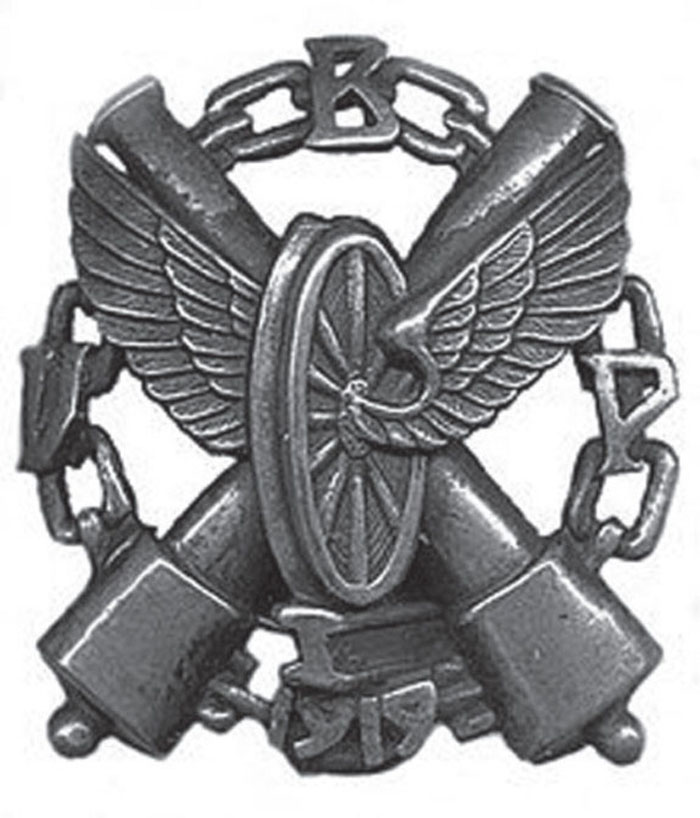
The territory which would become the independent state of Latvia was occupied by German troops from March to November 1918. In the Russian Civil War, the majority of Latvian units fought on the Bolshevik side. In 1918,2 two ‘governments’ claimed hegemony, one being a coalition of democratic parties and the other the Bolsheviks. Both sides armed their troops for the conflict. Alongside them the German troops stationed in Courland together with Germans who had settled in Latvia formed the Landeswehr3 under the command of General Rüdiger von den Goltz. Their aim was to fight the Reds with the aid of the White Russian forces commanded by Colonel Pavel Bermondt-Avalow, and then to march on Moscow. In October 1919 they began their offensive, but the German troops were halted by the combined efforts of the Allied fleet and two Estonian armoured trains (the Estonians at that time occupying the northern part of Latvia). In November, the ‘Bermondtists’ were beaten, and retreated to Prussia. In January 1920, the Latvian forces went on the offensive against the Bolsheviks, and the subsequent Treaty of Riga signed on 11 August 1920 formally recognised the independence of Latvia, no longer part of Russia.
As the military and political situation evolved, German and Estonian armoured trains were engaged in combat either alongside or against the Latvian forces. On 22 May 1919, a Bolshevik armoured train was captured by the Landeswehr in Riga. It then fell into the hands of the Latvians at the battle of Cesis and was designated BV No 1. The future BV No 2 named Komunistu iznicinātājs (‘Destroyer of Communists’) went into action on 9 July 1919. These units, forming an Armoured Train Battery created on 21 July 1919, were joined by BV No 3 in September 1919 and by BV No 4 (captured from the Bermondtist forces) in November 1919.
At the close of the War of Independence, Latvia possessed six trains,4 but by 1921 only two remained in service, and these lacked anti-aircraft armament. In October 1923 the Latvian Government made overtures to France for the construction of six engines, four or six armoured wagons and twenty wagons mounting turrets. However, following a political crisis in Latvia the project was shelved in January 1924.
Between 1925 and 1930, as part of a major modernisation and rearmament programme, four new trains entered service and made up the Armoured Train Battery5 based in Riga, which also included three 152mm Canet railway guns. The armoured trains were divided between the Russian gauge (1520mm/5ft nominal) and the standard gauge (1435mm/4ft 8½in) networks. The Latvian Guard (Aizsargs) which came under the authority of the Minister of the Interior, appears also to have used armoured trains as part of its railway regiment.
On 1 July 1926, the Battery was reorganised as an Armoured Train Regiment, and in 1939 it was planned to build two additional units. The Regiment was eventually dissolved on 3 February 1940, because of a lack of ammunition which up until then had been supplied by Czechoslovakia and Germany. The two trains still in service were allocated to the Coast Artillery Regiment.6
On 17 June 1940, Soviet forces occupied Latvia, and the armoured trains were incorporated in the Red Army. The following year, the Soviet armoured trains of obvious Latvian conception were cut off and captured by the Wehrmacht, who set about converting the Latvian railway network from Russian gauge to standard gauge. This task was virtually complete by the end of 1941, and the majority of Latvian armoured train units were thereafter reused by the Wehrmacht.

The badge of the Latvian Armoured Trains Regiment.
(Photo: All Rights Reserved)
PZ 5 of the Landeswehr.
(Photo: Paul Malmassari Collection)
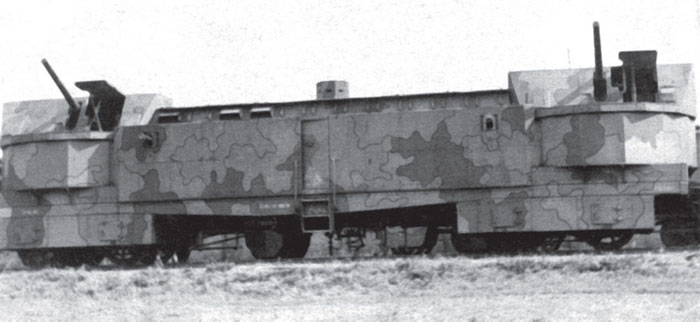
In 1919, the Latvians captured a Bolshevik armoured train of the ‘Krasnoye Sormovo’ type, and put it into service with their own armed forces.
(Photo: Latvijas Kara Musejs)
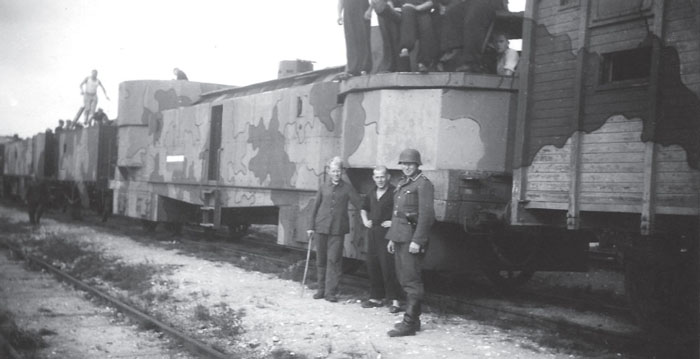
Here is the same wagon, captured in turn by the Wehrmacht in 1941.
(Photo: Paul Malmassari Collection)
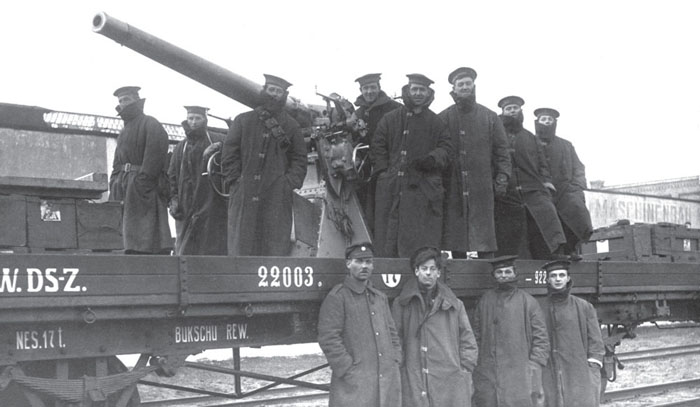
The platform wagon Kalpas of BV No 5 in November 1919, with its crew of British sailors and Marines and their 3in HA gun.
(Photo: Latvijas Kara Musejs)
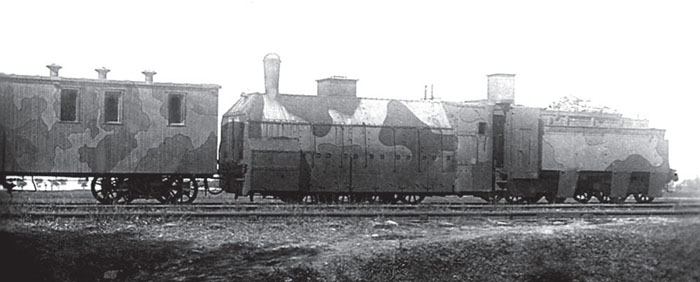
Unidentified Latvian armoured train, probably photographed in the 1920s.
(Photo: Latvijas Kara Musejs)
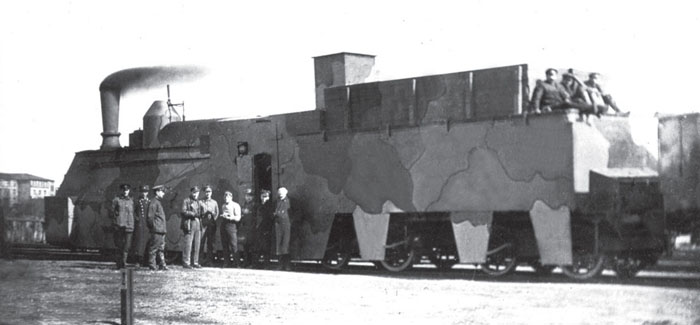
A similar armoured loco, seen here at Daugavpils in 1923.
(Photo: Latvijas Kara Musejs)
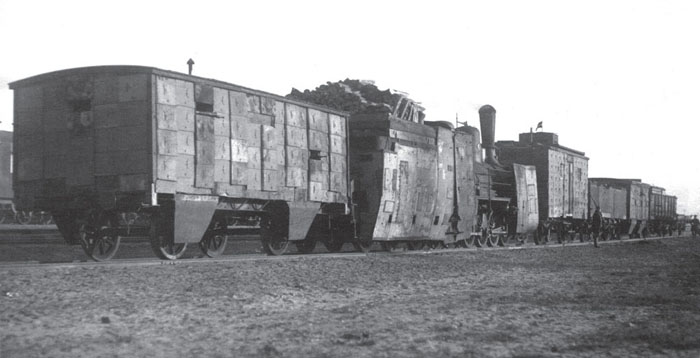
BV No 2 in 1919. Its armour protection consists of Russian trench shields, of which several thousand were available in the stores.
(Photo: Latvijas Kara Musejs)
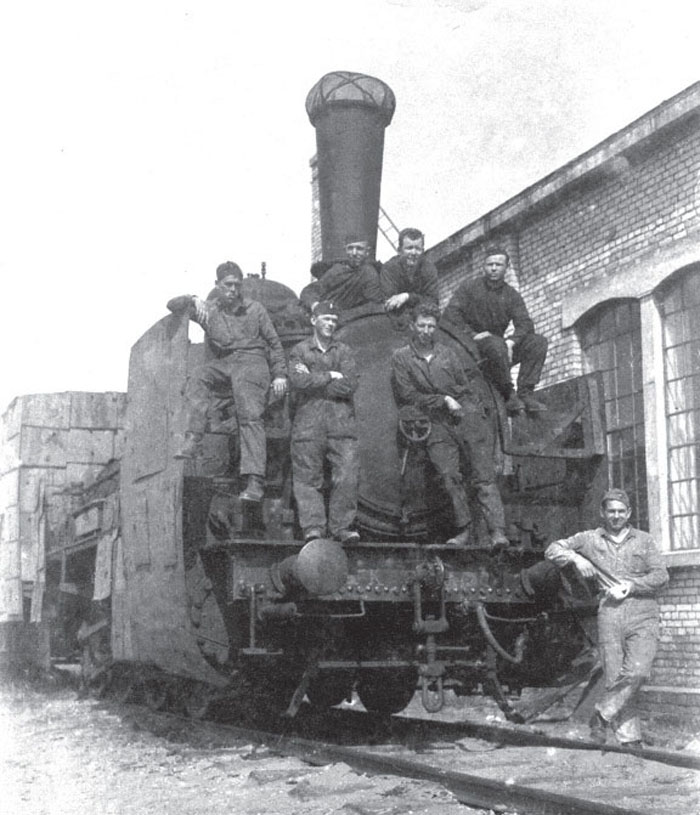
The armoured locomotive from BV No 2, demonstrating that it too was armoured using Russian trench shields.
(Photo: Latvijas Kara Musejs)
A classic shot of one of the later Latvian armoured trains.
(Photo: Paul Malmassari Collection)
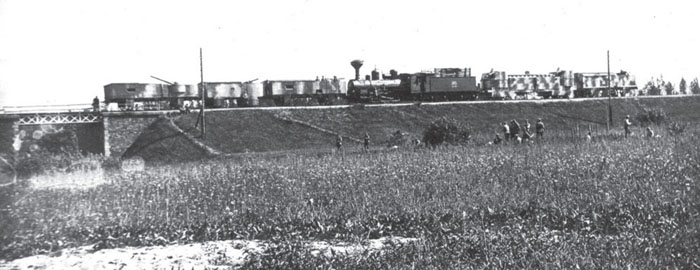
Probably BV No 1 near the Viksna bridge in the Summer of 1924.
(Photo: Latvijas Kara Musejs)
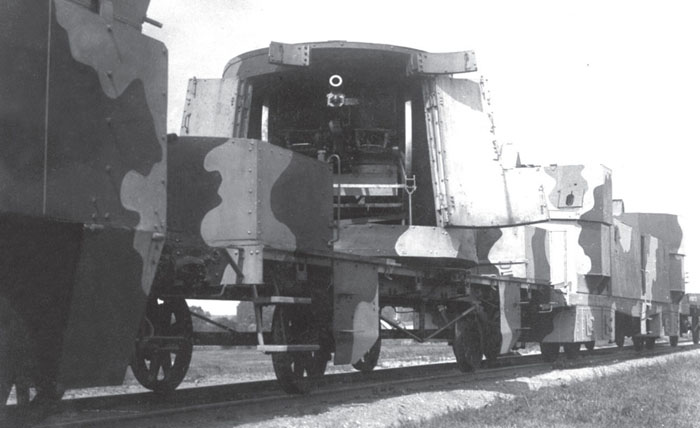
One of the two armoured wagons designed by engineer Oskars Dzervitis in 1925. Interestingly, the turret gun (which is probably a German 7.7cm 16 field gun) still retains its wheels and gunner seats, possibly allowing for it to be dismounted for use off the train. In the same year, the older locomotives were replaced by new engines, fitted with arrangements to vent the steam and smoke at rail level.
(Photo: Latvijas Kara Musejs)
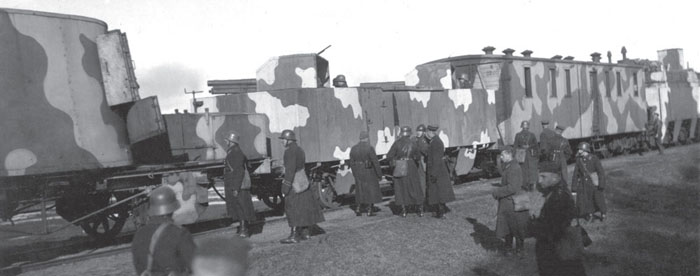
Armoured train at gunnery practice in October 1931.
(Photo: Latvijas Kara Musejs)
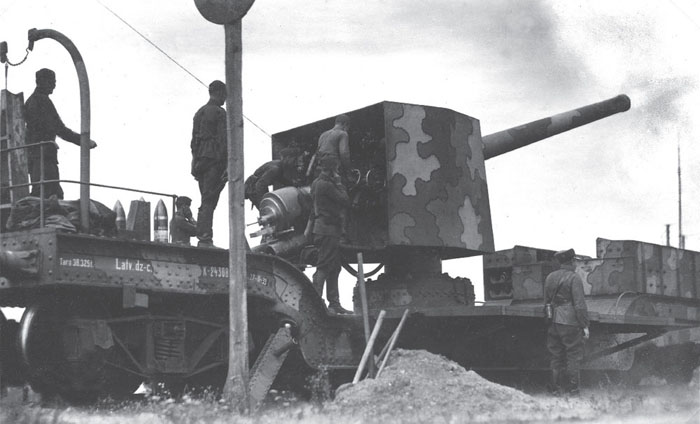
One of the 152mm Canet railway guns, photographed in 1937.
(Photo: Latvijas Kara Musejs)
Photographed in Cietoknis Station, a modern train evidently made up of elements of shorter trains, including the old platform wagons from PZ 5 still in use, but now armed with British guns.
(Photo: Latvijas Kara Musejs)
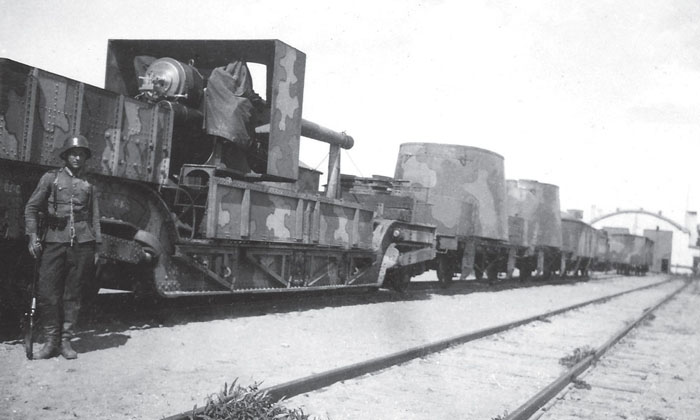
One of the Canet guns seen here in travelling mode, attached in support of a complete armoured train.
(Photo: Paul Malmassari Collection)
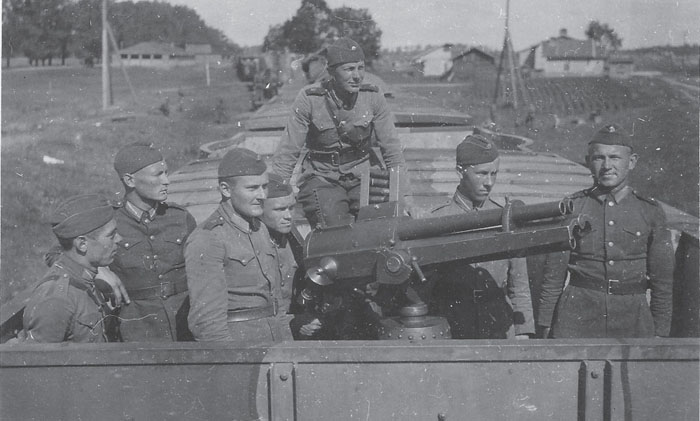
An armoured train seen during the 1930s, armed with a 37mm Hotchkiss revolver cannon, a devastating close-range anti-personnel weapon despite its age.
(Photo: Paul Malmassari Collection)
SOURCES:
Book:
Lavenieks, J, Bruņoto vilcienu pulks (New York: Izd. Vera Laveniece, 1971).
Websites:
http://vesture.eu/index.php/Bru%C5%86oto_vilcienu_pulks
http://vesture.eu/index.php/Latvijas_armijas_Bru%C5%86oto_vilcienu_divizions
http://www.lacplesis.com/WWI_To_WWII/Pirmais_Pasaules_un_Brivibas_Kars/BRUNOTAIS_VILCIENS/index.htm
1. In Latvian: Bruņoto’ Vilcienu, abbreviated as BV.
2. November 18th 1918 is recognised as Independence Day in Latvia.
3. Territorial Defence Force.
4. Included were two trains armed by the British who also provided training: Kalpaks (the future BV No 5) and Pikols. Both were discarded in December 1919.
5. BV No 3 was activated in 1928 and BV No 4 in 1930.
6. The static defences had been reinforced in the late 1930s by two railway guns.